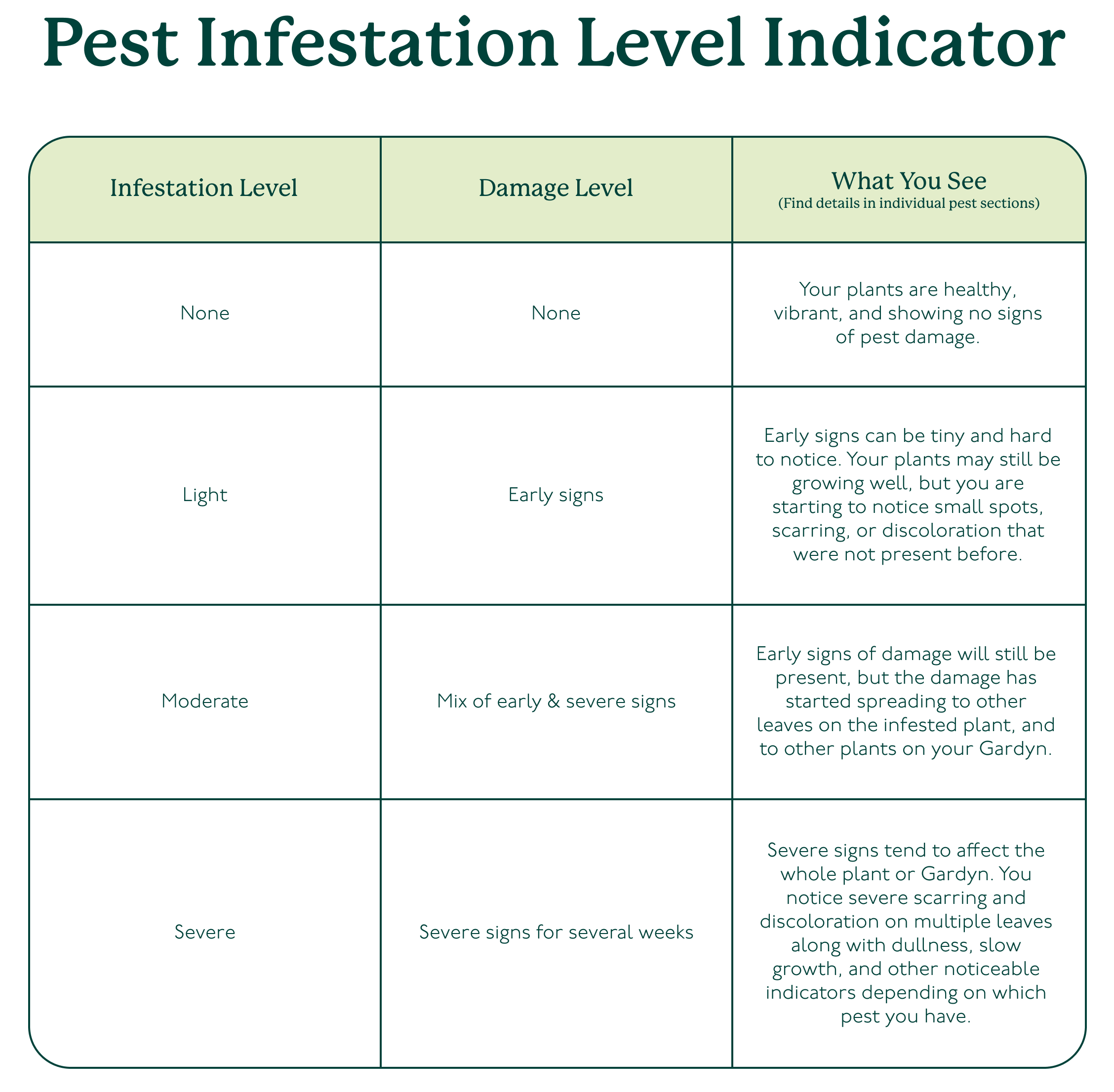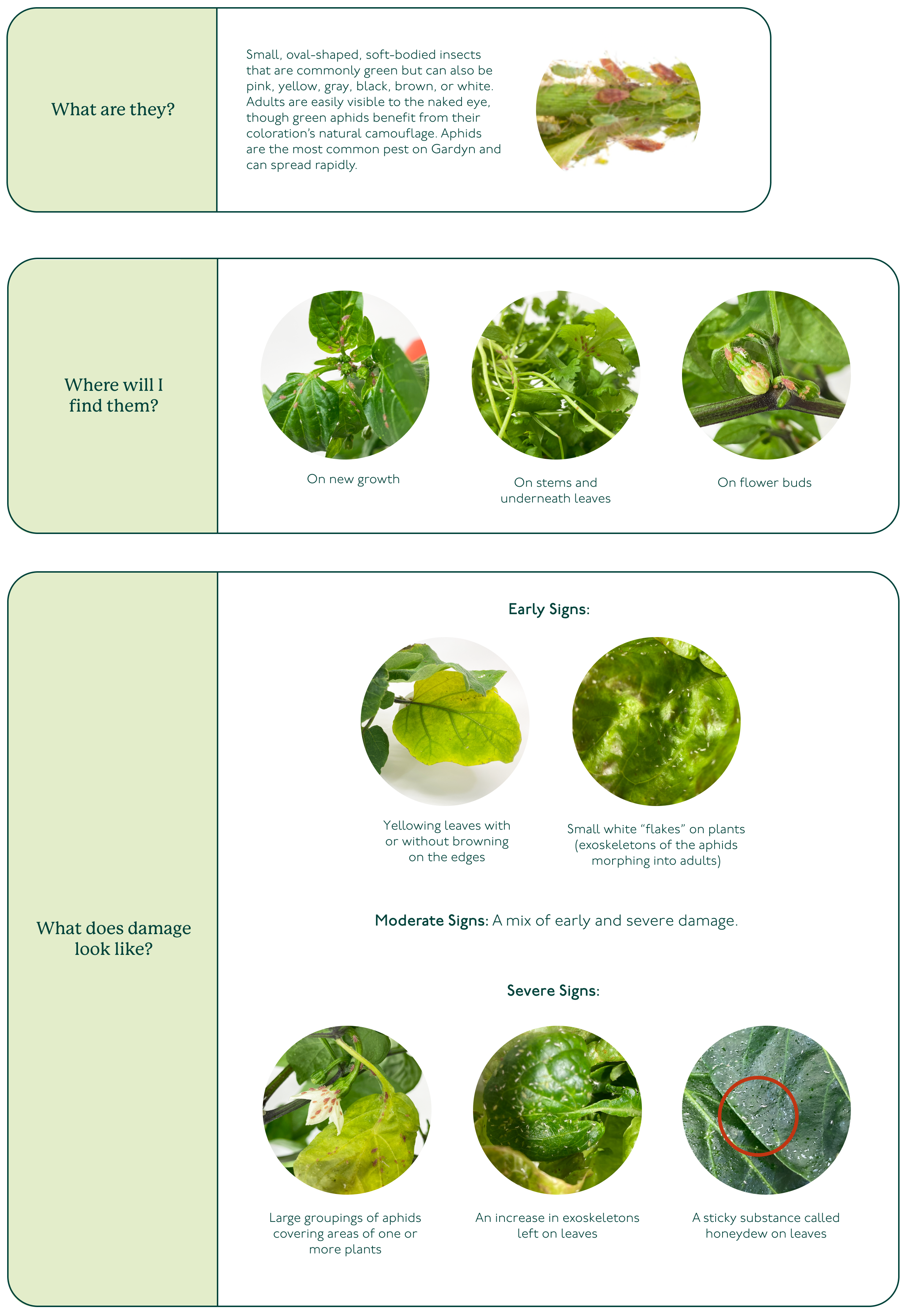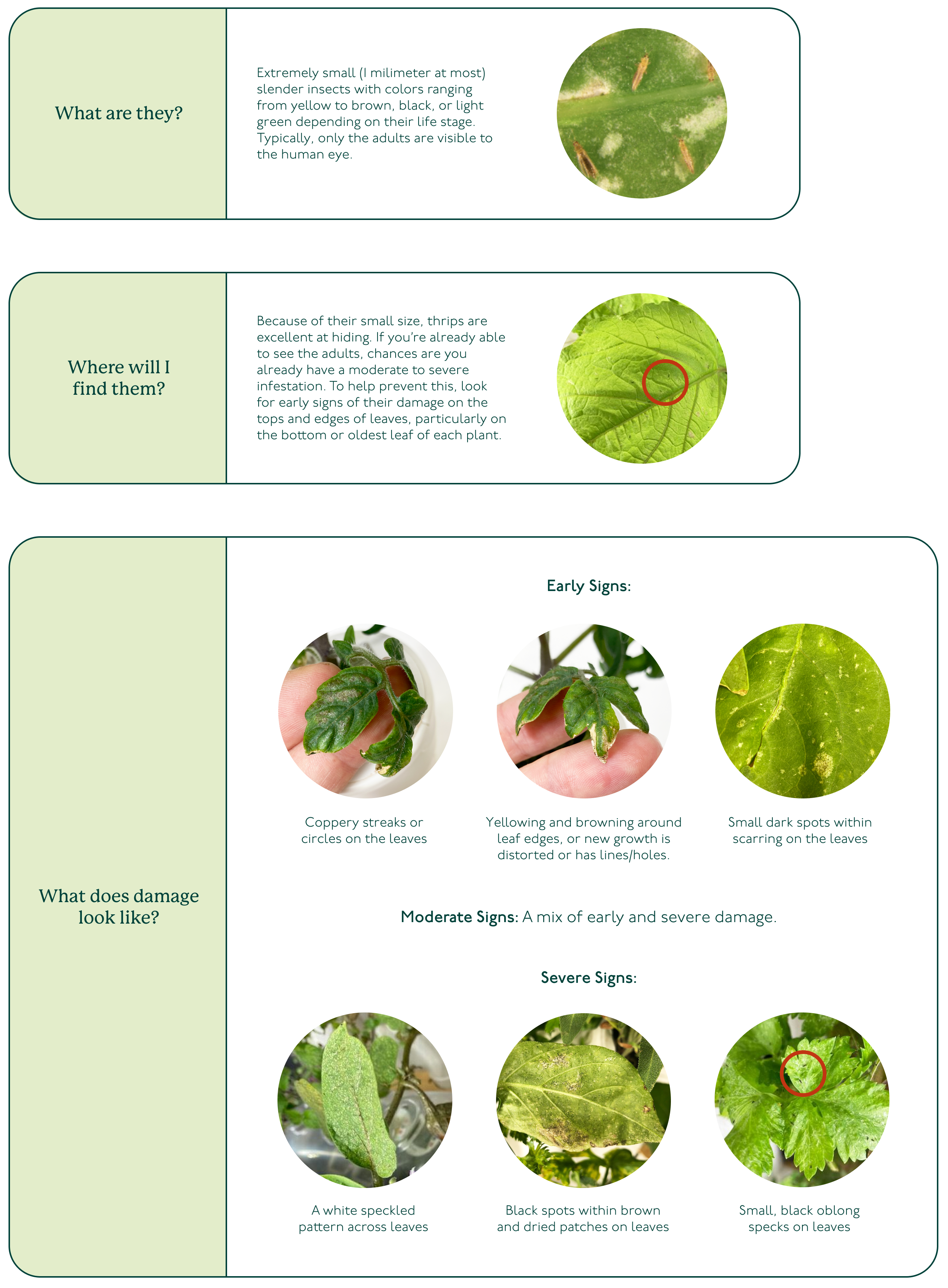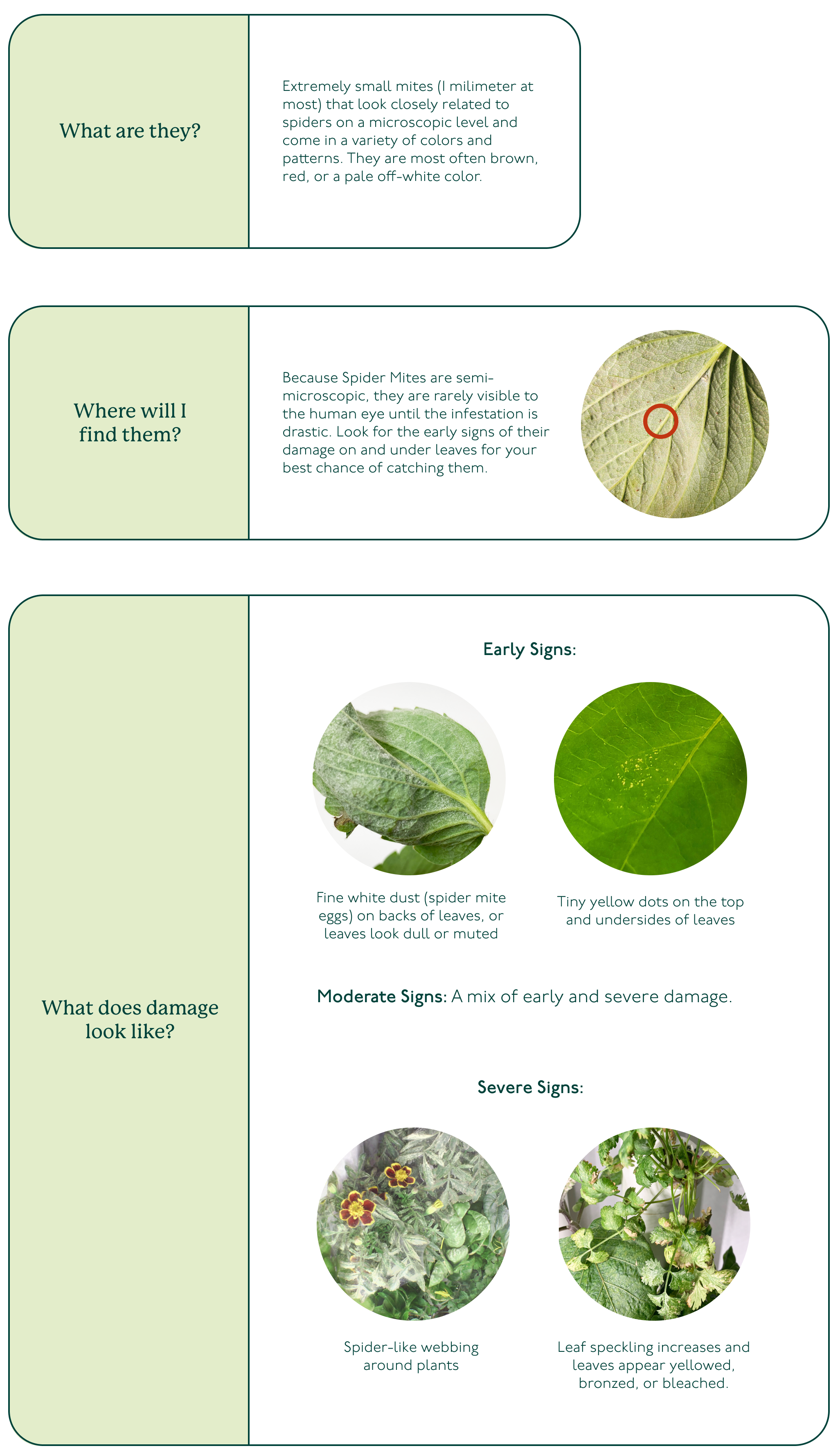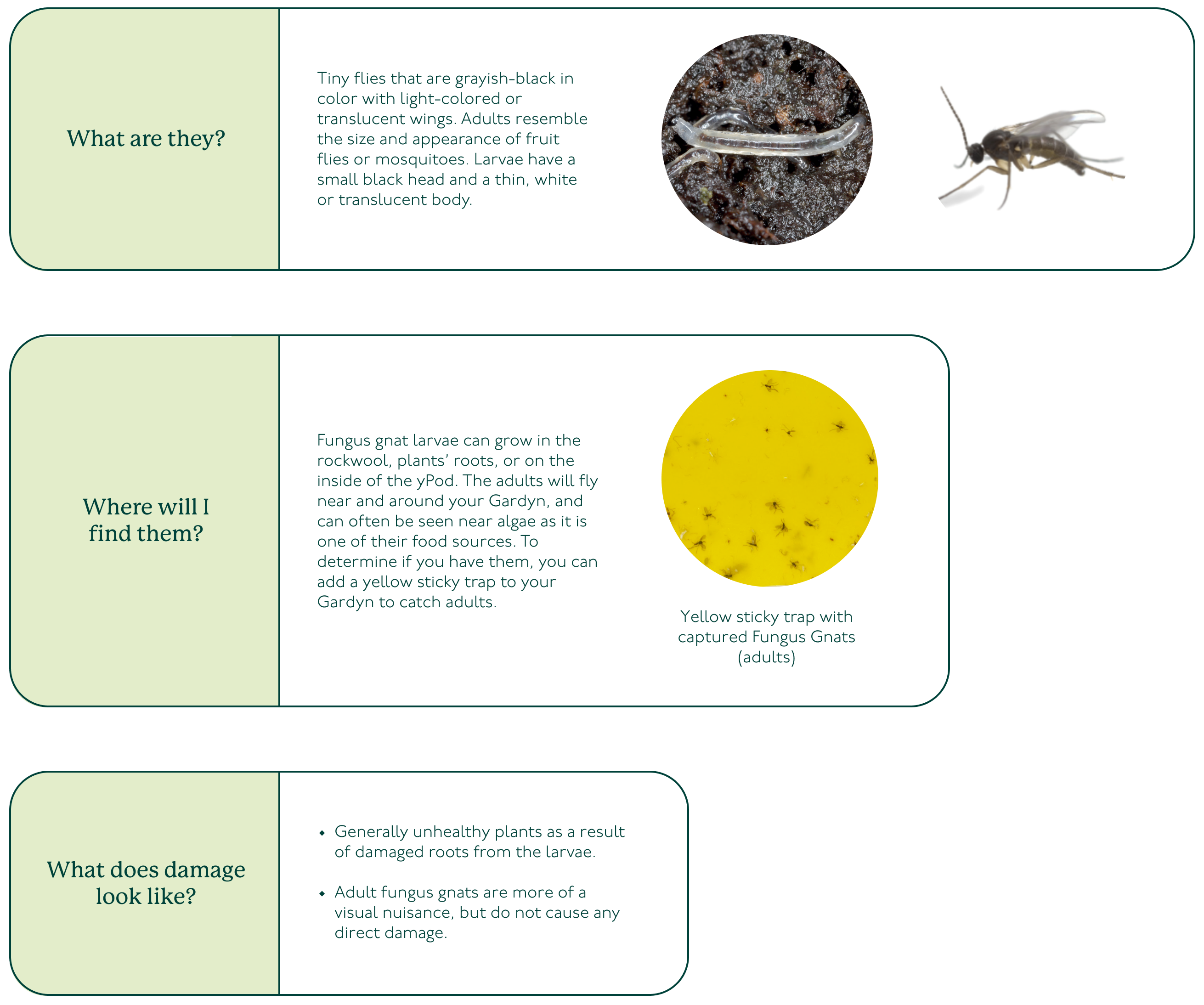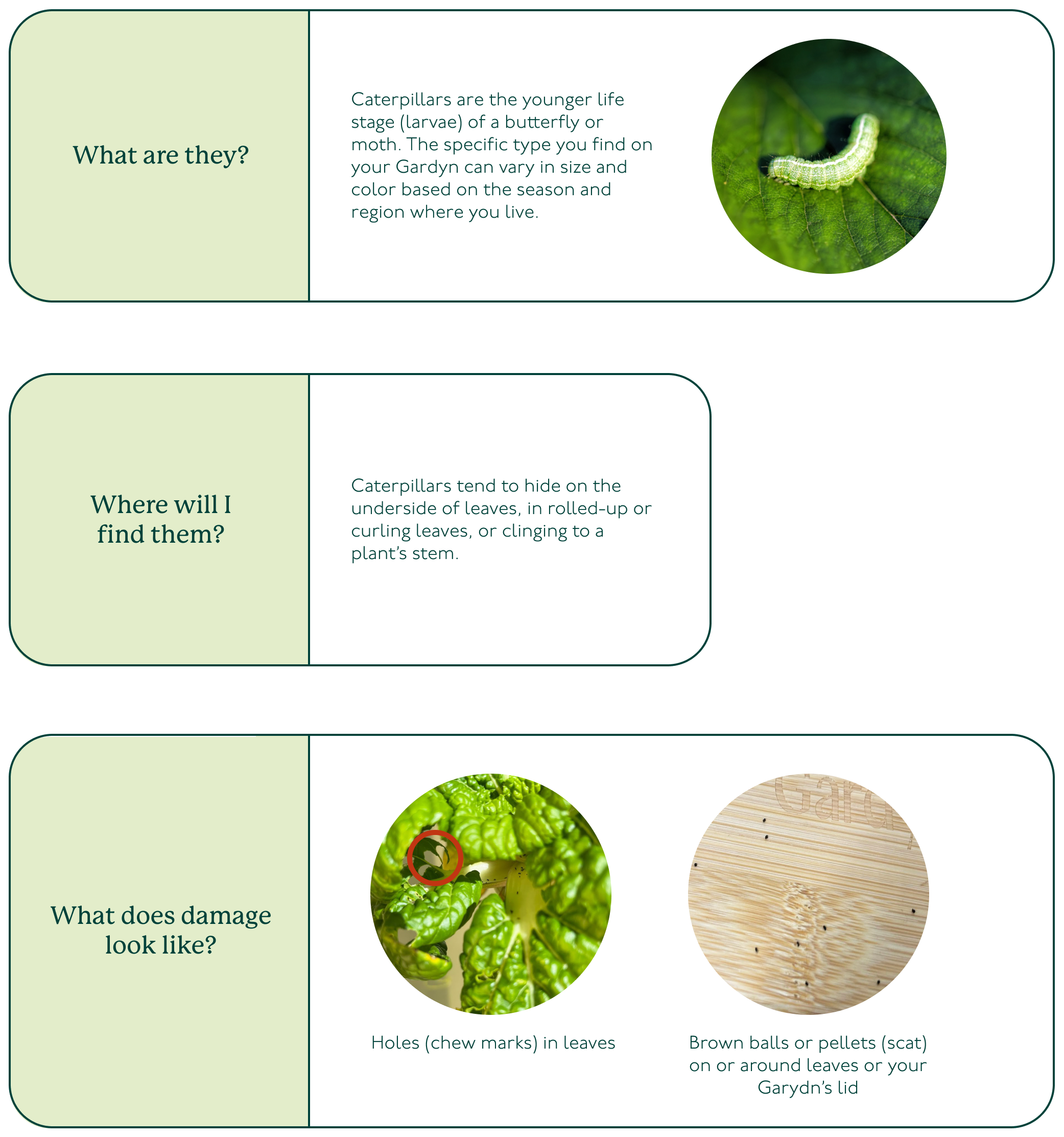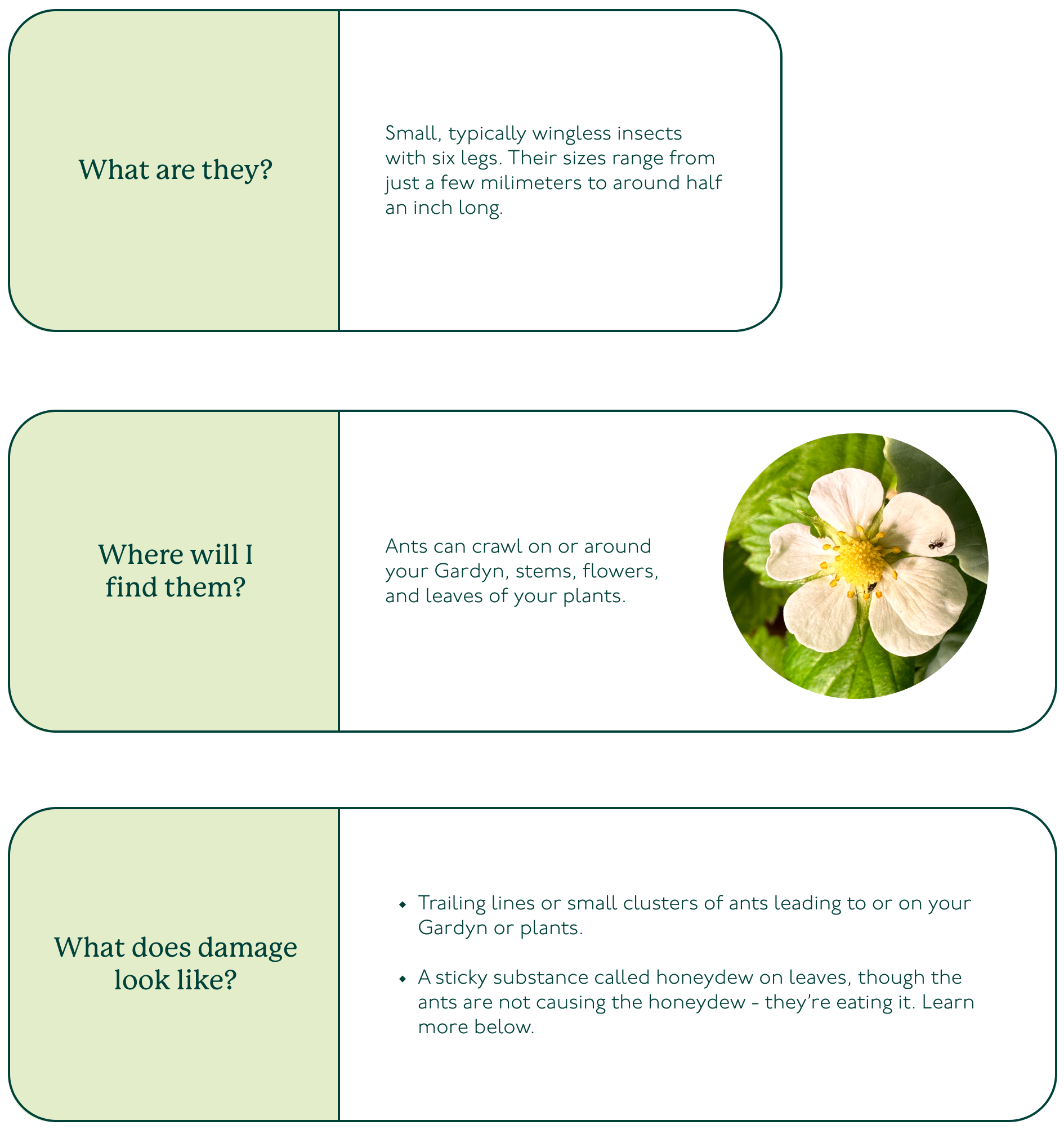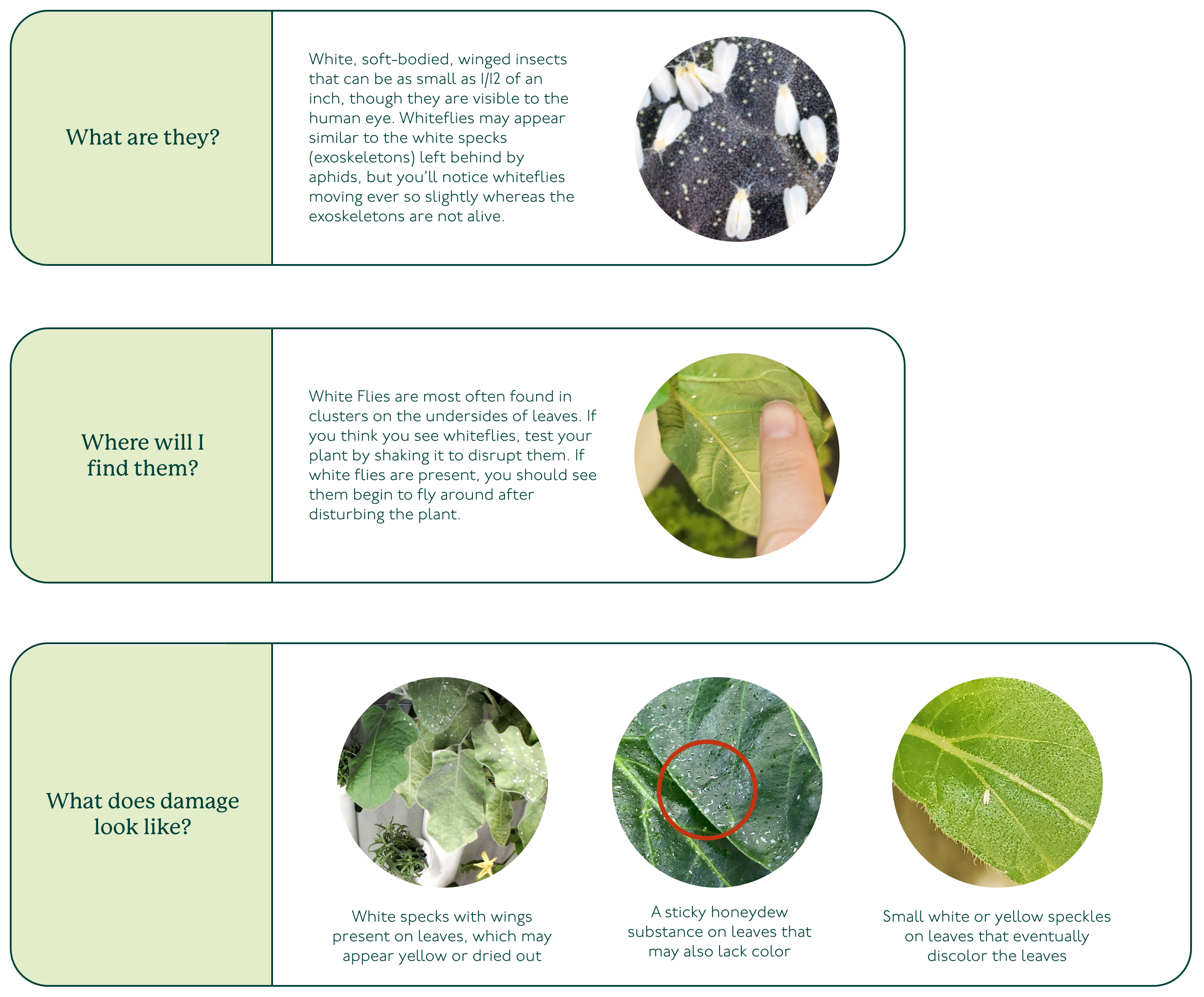How to Scout & Identify Pests
Pests are a natural part of growing plants, but you can help prevent them with simple practices built into your daily Gardyning routine, including scouting.
What is scouting & how do I do it?
Scouting means carefully looking at your plants for pests or signs of their damage.
To scout, look closely at all of your plants at least once a week, keeping an eye out for anything that looks unusual. Look under leaves, on stems, near flowers, and on new growth.
Scouting doesn’t have to be a unique step - integrate it into your daily Gardyning routine! Peruse your plants whenever you harvest, add water, or have a moment to appreciate their beauty. Scouting at least once a week is a good start to pest prevention, and doing it more often (every 3-4 days) gives you the best chances of catching anything suspicious.
To help bring you peace of mind, Kelby observes members’ Gardyns 24/7 and will alert you if anything suspicious is detected. Plus, our plant experts are always available to help members through any questions or challenges. If, in spite of your best prevention efforts, you do end up with pests, it’s okay! We’re here to help you every step of the way.
Take the Pest ID Quiz
Already found something you’re trying to identify? Take our easy quiz in the app! From your Gardyn App home screen, tap the (?) on the bottom navigation bar to get to the resource center. Select "Get guided help", then choose the "Plants, pests, & growing environment" category. The Pest ID Quiz will be an option on the following screen!
Alternatively, simply search "pest" in the app's help center search bar to see the Pest ID Quiz in your results.
TIP: Not everything suspicious or unusual may be a pest. If you’re observing plant leaves that are curling, or have bumps or crystal-like deposits on them, your plant(s) may have Edema. Edema is not a pest or disease, but a condition, and should not affect your plant’s overall success. Learn more here!
What are the potential pests of Gardyning?
The most common pests found on Gardyn are aphids, thrips, spider mites, fungus gnats, caterpillars, ants, and whiteflies. Click on any pest name to jump to its ID section!
Understanding Infestation Levels
If you identify a pest while scouting, you’ll also need to decide what level of infestation you’re seeing, which ranges from light to moderate or severe. Understanding your infestation level helps you determine the best treatment plan. The exception is aphids; while the signs of an infestation vary with severity, the treatment plan is the same no matter what you see.
Identifying the Most Common Pests of Gardyning
Aphids
Find the treatment plan for any level of an aphids infestation here.
Thrips
Find treatment plans for all levels of a thrip infestation here.
Spider Mites
Find treatment plans for all levels of a spider mite infestation here.
Identifying the Less Common Pests of Gardyning
Fungus Gnats
Find treatment plans for fungus gnats here.
Caterpillars
Find treatment plans for caterpillars here.
Ants
Find treatment plans for ants here.
Whiteflies
Find treatment plans for whiteflies here.
Questions? Reach us at support@mygardyn.com, or chat with us! We're here to help.

